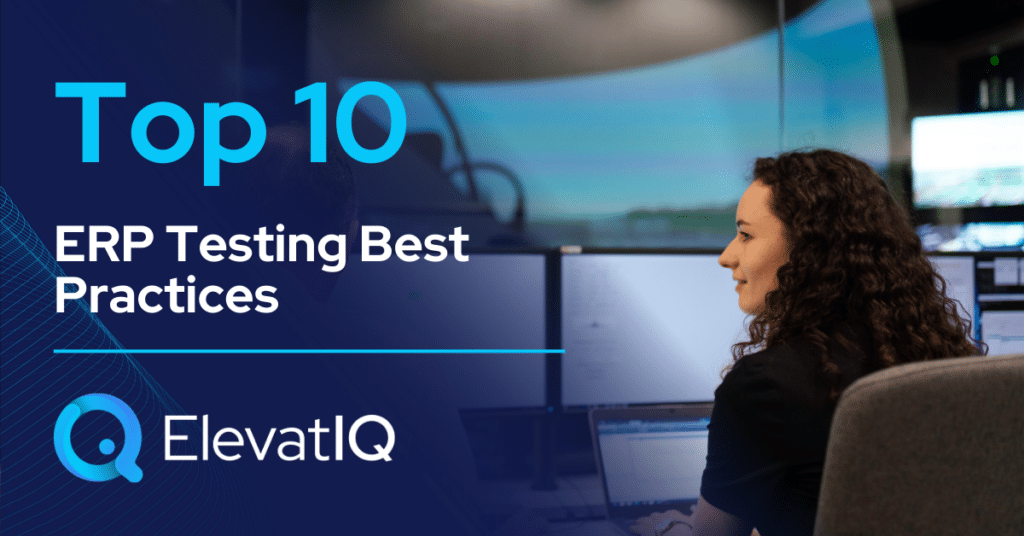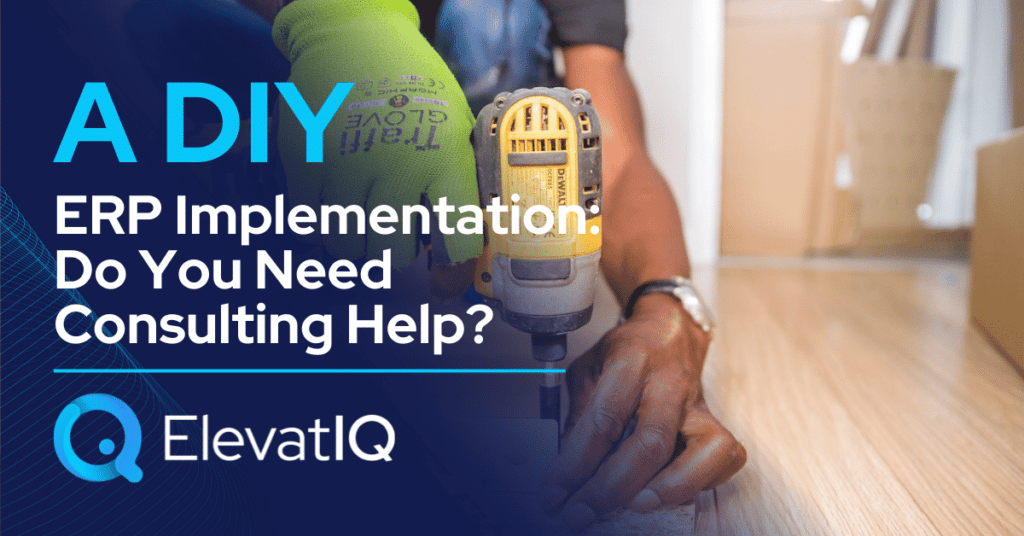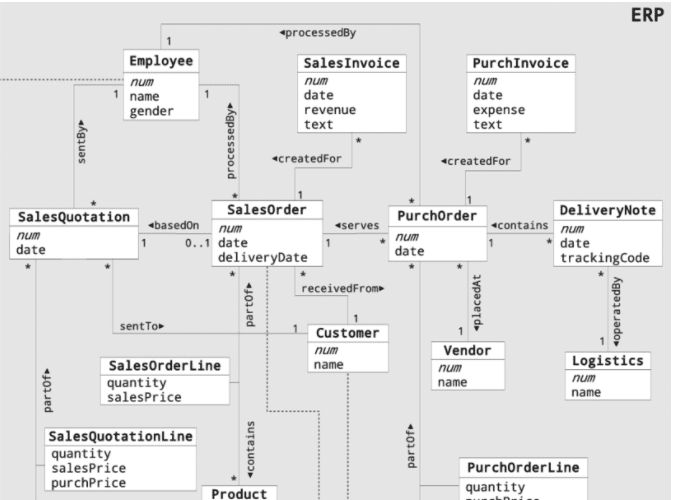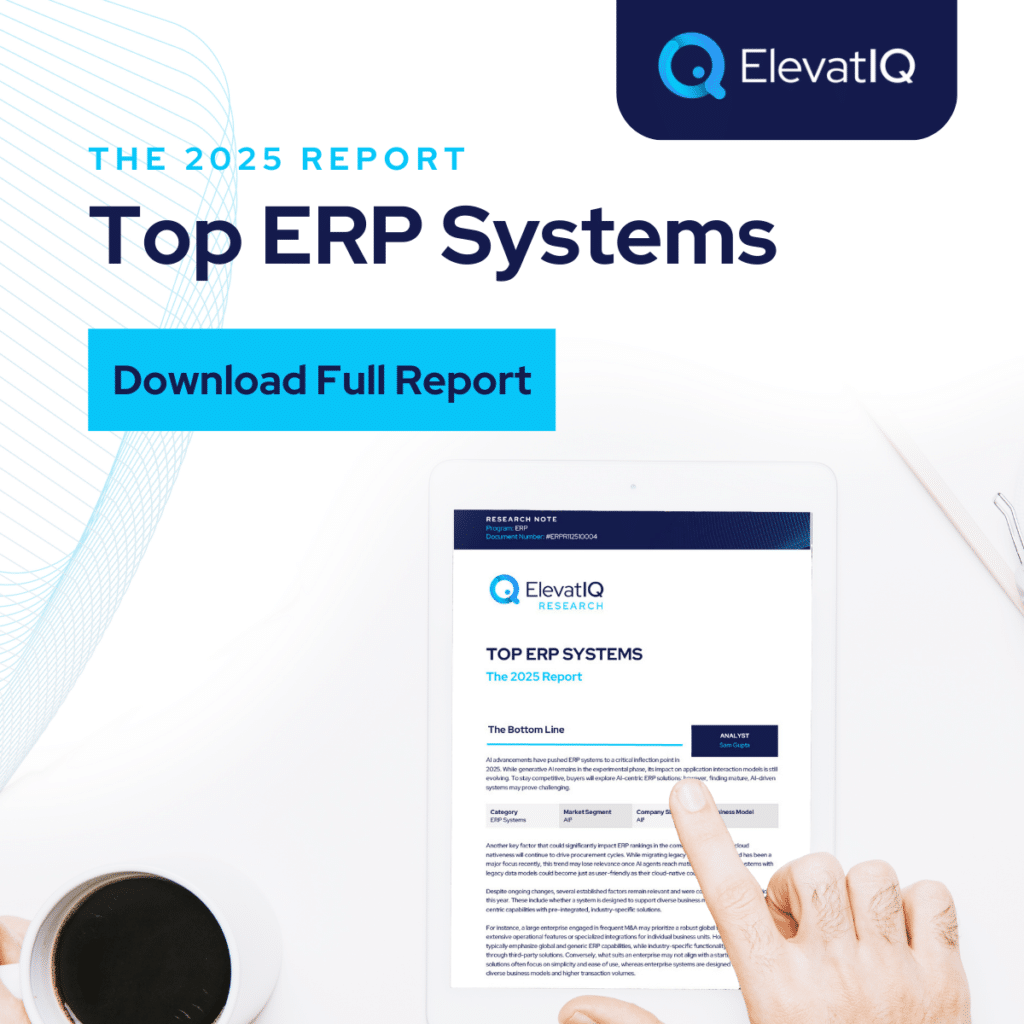Top 10 ERP Testing Best Practices
Effective software testing is not just a practice; it’s an absolute necessity. A single disruption within an ERP framework has the potential to bring down an entire business. The stakes are high. Therefore, the key to preventing such disruptions lies in the planning and executing of a robust ERP testing plan. Whether you are navigating the complexities of different ERP testing phases, a well-structured ERP testing plan is your ultimate solution. Thus, ultimately minimizing downtime and maximizing overall efficiency.
Regardless, building an ERP test plan is hard. Executing is even harder. And if you are building a test plan for ERP implementation, you have added challenges. The testing challenges are unique with ERP implementation. This is because users don’t have as much experience with the software development life cycle. They struggle with thinking like a tester, where planning for edge and boundary cases is essential. Thus, ensuring that you won’t find any surprises post your go-live. But how to build a successful ERP test plan for an ERP implementation without issues?
Before we discuss the ERP testing best practices, let’s quickly have a look at its definition and different ERP testing phases. The reason is that there are a few misconceptions regarding ERP test cases. Which is, it being generalized and having faulty designs as part of the ERP testing plan. To tackle these challenges, you must understand the fundamentals first.
What is ERP Testing?
ERP testing plays a crucial role in verifying the effective operation of the ERP system. This comprehensive testing encompasses various phases, including unit testing, integration, system and user acceptance (UAT) testing. The primary objective of ERP testing is to guarantee that the platform functions according to expectations. Therefore, eliminating any potential issues that could impede the organization’s performance. Moreover, consistent ERP testing serves as a vigilant monitoring and control mechanism. It assesses the platform’s efficiency by identifying errors and areas for improvement. Timely detection of issues and their prompt resolution is essential for ensuring the seamless functioning of organizational operations.
Phases of ERP Testing
When we talk about ERP testing, it is pertinent to understand that there are different phases of ERP testing. Let’s review each.
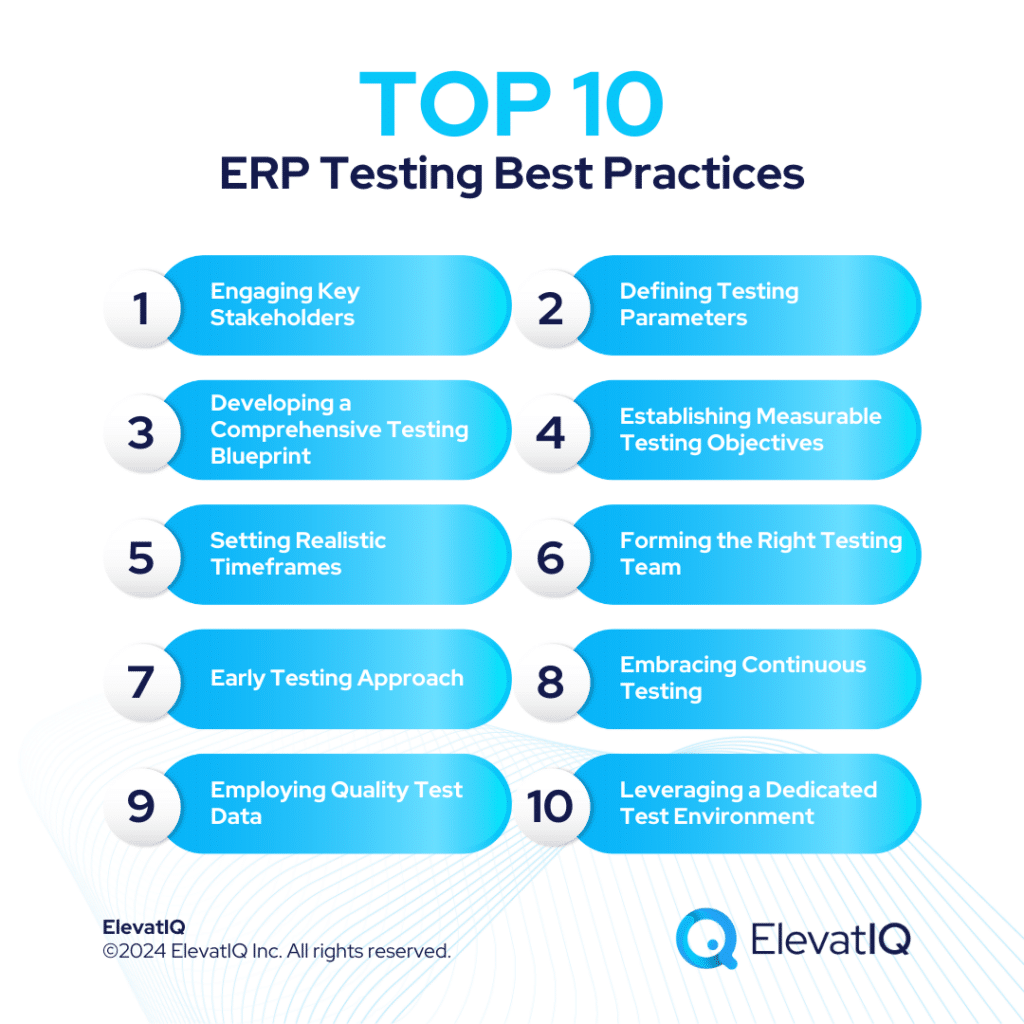
1. Unit Testing
The first phase in the ERP testing process is unit testing. Individual modules or components of the ERP system are rigorously examined for functionality and logic. In this phase, developers or the technical team utilize tools to conduct tests on isolated modules. The primary objective is to ensure that each unit of the ERP system performs as intended. This is achieved by addressing potential issues at the granular level. By validating the functionality of individual components, organizations lay a solid foundation for the subsequent testing phases. In turn, minimizing the risk of inherent defects that could propagate to the integrated system.
2. Integration Testing
Following unit testing is the integration testing phase. This phase focuses on testing the interactions and dependencies between different modules or components of the ERP system. Testers or the functional team employ tools to assess the seamless integration of various system elements. The primary objective is to identify and rectify any issues that may arise when different modules interact. Integration testing ensures that data flows cohesively between different components and that the integrated system operates as a unified whole. This phase is crucial for detecting integration-related challenges early in the testing process. Also, contributing to the overall reliability and stability of the ERP system.
3. System Testing
System testing constitutes the third phase in the ERP testing process. It involves the examination of the entire ERP system as a cohesive unit. Testers or the quality assurance team conduct comprehensive tests for performance, security, usability, reliability, and compatibility. The objective is to ensure that the ERP system meets specified requirements and functions optimally in a real-world scenario. System testing provides a holistic evaluation of the system’s performance. It identifies potential bottlenecks, vulnerabilities, or compatibility issues that may arise in an integrated environment.
4. User Acceptance Testing (UAT)
The final phase of ERP testing is user acceptance testing (UAT). This is where end-users or stakeholders actively participate in evaluating the ERP system for its suitability and satisfaction. The primary goal of UAT is to validate that the ERP system aligns with business requirements. Also, to ensure that the system meets the expectations of end-users. By involving end-users in the testing process, organizations ensure that the system is user-friendly and capable of supporting operational needs. UAT serves as the last line of defense before system deployment. It provides valuable insights into user satisfaction. And, also identifies any critical issues that may impact the system’s usability in a real-world context.

ERP Testing Best Practices
1. Engaging Key Stakeholders
Ensuring the success of ERP testing begins with engaging key stakeholders across the organization. Collaboration from upper management, development teams, and end users conducting user acceptance testing (UAT) is essential. By fostering an inclusive testing environment, organizations can harness the diverse perspectives and expertise necessary for a comprehensive evaluation of the ERP system’s functionality. No-code test automation serves as a game-changer, democratizing the testing process and allowing anyone within the organization to contribute, irrespective of their coding proficiency.
2. Defining Testing Parameters
The foundation of a robust ERP testing plan lies in a clear understanding of the business processes and integrations that need evaluation. Organizations must meticulously define testing parameters to prevent both over-testing and under-testing. By conducting a thorough examination of current processes and integrations, organizations can develop a targeted testing strategy, enhancing the accuracy and efficiency of the entire testing process. This step is crucial in aligning testing efforts with organizational goals and ensuring a focused and purposeful testing approach.
3. Developing a Comprehensive Testing Blueprint
Creating a detailed testing plan is paramount in ensuring alignment on testing priorities among all stakeholders. A comprehensive testing blueprint acts as a roadmap, providing visibility into the testing process for all team members. By fostering transparency and clarity, organizations can mitigate misunderstandings and streamline the testing workflow. This ensures that every aspect of the ERP system is evaluated systematically, contributing to the overall success of the testing plan.
4. Establishing Measurable Testing Objectives
To monitor testing progress effectively, organizations must establish KPIs that are specific and measurable. These objectives serve as benchmarks, allowing teams to gauge their progress and adjust their strategies accordingly. By defining measurable testing objectives, organizations can quantify the success of the testing plan, enabling continuous improvement and refinement of testing processes. This data-driven approach ensures that testing efforts align with broader organizational goals and contribute to the overall success of the ERP implementation.
5. Setting Realistic Timeframes
Setting realistic timelines is crucial for the success of any ERP testing plan. The size and complexity of ERP systems vary, and organizations must be aware of relevant update cycles and business deadlines. By carefully considering these factors, organizations can develop a thorough and achievable testing timeline. This not only prevents rushed testing, which can lead to oversights, but also ensures that the testing plan aligns with broader business objectives. Realistic timeframes contribute to the overall efficiency and success of the ERP testing process.
6. Forming the Right Testing Team
Ensuring the composition of a well-balanced ERP testing team is critical for the effectiveness of the testing process. This team should consist of diverse members, including business leaders, developers, QA engineers, and business users, each with a clear understanding of their roles and responsibilities. Collaborative efforts from various perspectives contribute to a comprehensive evaluation of the ERP system, uncovering potential issues from different viewpoints. Clear communication channels within the team enhance efficiency, enabling timely completion of testing deliverables and promoting a unified approach to achieving testing goals.
7. Early Testing Approach
Adopting a shift-left testing approach is pivotal for addressing potential issues early in the development process, preventing bottlenecks, and ensuring a more efficient ERP testing lifecycle. By shifting testing activities closer to the beginning of the development cycle, organizations can identify and rectify issues at their nascent stages, reducing the likelihood of these issues escalating into critical problems later on. Early testing promotes a proactive mindset, allowing teams to address concerns promptly and maintain the overall integrity of the ERP system throughout its development and implementation.
8. Embracing Continuous Testing
Continuous testing is integral to ensuring the consistent optimal performance of an ERP system. This approach involves testing throughout the development lifecycle, from initial stages to post-implementation, to detect and rectify bugs before they evolve into significant issues. Embracing continuous testing minimizes the risk of overlooking potential problems, as testing becomes an ongoing, integral part of the development process. This iterative approach contributes to the overall stability and reliability of the ERP system, allowing organizations to adapt quickly to changing business needs and technologies.
9. Employing Quality Test Data:
The reliability of ERP test results is contingent upon the quality of test data utilized. Organizations should leverage data from user surveys, performance audits, or automated test data management tools like Opkey. Quality test data ensures that the testing environment closely mirrors real-world scenarios, enhancing the accuracy and relevance of test results. By employing data that accurately represents the diversity of user interactions and system usage, organizations can identify and address potential issues more effectively, ultimately improving the overall robustness of the ERP system.
10. Leveraging a Dedicated Test Environment:
Using a separate test environment is crucial to reducing the risk of errors during the system launch. This dedicated space provides a secure environment for testing various configurations without jeopardizing the production system. By isolating the testing environment, organizations can conduct thorough evaluations without the fear of disrupting critical business processes. This not only safeguards the integrity of the ERP system but also allows for the identification and resolution of issues before the system goes live, contributing to a more seamless and reliable implementation.
11. Conducting a Thorough Documentation
Comprehensive documentation is a cornerstone of effective ERP testing. Documenting every aspect of the testing process serves multiple purposes – it helps in avoiding oversights, ensures accountability, and provides a valuable learning manual for future testers. Automated test documentation tools are highly recommended for their accuracy and compliance. These tools streamline the documentation process, capturing changes, test scenarios, and results in real-time. This not only facilitates a transparent and well-documented testing process but also aids in knowledge transfer, enabling seamless collaboration among team members and ensuring the continuity of testing standards across different testing phases.
12. Tracking System Changes Systematically
System changes are inevitable in the dynamic landscape of ERP implementations. It is crucial to systematically record and communicate any changes in the ERP system to the testing team. This ensures that new features and bug fixes are thoroughly tested before updates are implemented. Keeping the testing team informed allows for a proactive approach to incorporate necessary testing adjustments, reducing the risk of post-implementation issues. Systematic tracking of changes contributes to the overall stability and reliability of the ERP system, fostering a culture of vigilance and adaptability within the testing process.
13. Maximizing Test Case Libraries
Efficiency in ERP testing can be significantly enhanced by maximizing the use of pre-defined test cases. Utilizing established test cases for ERP systems saves both time and resources, eliminating the need to create tests from scratch. These pre-defined test cases, often based on industry best practices, cover a wide range of scenarios, ensuring comprehensive test coverage. By leveraging existing test case libraries, organizations can streamline the testing process, reducing redundancy, and increasing the overall efficiency of the testing effort. This approach allows testing teams to focus on unique aspects of the ERP system, ensuring a more targeted and effective testing strategy.
14. Allocating Sufficient Time for UAT
User Acceptance Testing (UAT) is a critical phase in the ERP testing plan, and allocating ample time for end users to thoroughly test the system is imperative. UAT provides a real-world validation of the ERP system’s functionality and usability, ensuring that it meets the expectations and requirements of end users. Adequate time allocation for UAT allows for comprehensive testing, feedback gathering, and necessary adjustments before the system is deployed. Prioritizing UAT in the testing plan contributes to the overall success of the ERP implementation by enhancing user satisfaction and minimizing the likelihood of post-implementation issues.
15. Conducting Regression, Functional, & Integration Testing
To ensure the stability and functionality of an ERP system, it is crucial to conduct a combination of regression, functional, and integration testing. Regression testing ensures that modifications to the ERP system do not compromise existing functionality. Functional testing validates individual features, ensuring they meet specified requirements. Integration testing focuses on verifying the interactions between different ERP components, ensuring smooth business processes. Adopting a comprehensive approach that includes these testing types contributes to the overall reliability and performance of the ERP system, minimizing the risk of issues arising during or after implementation.
16. Separating Security & Performance Testing
In a robust ERP testing plan, it is essential to conduct security and performance testing in distinct environments. This separation allows for the isolation of the impact of modifications on software functionality, ensuring that security measures are robust without compromising system performance. Security testing identifies vulnerabilities and safeguards against potential breaches, protecting sensitive data and maintaining compliance with industry regulations. Simultaneously, performance testing evaluates the ERP system’s responsiveness, stability, and scalability under varying conditions. By separating these critical testing aspects, organizations can ensure a holistic assessment of the ERP system’s capabilities while addressing specific concerns related to security and performance independently.
17. Ensuring Regulatory Compliance
Adherence to industry-specific compliance protocols is non-negotiable in ERP testing. Failure to comply with regulations can result in significant consequences such as fines and additional development costs. Integrating compliance checks into the testing plan ensures that the ERP system meets the required standards and regulations. This proactive approach not only mitigates legal risks but also fosters a culture of responsible and ethical ERP implementation. By prioritizing regulatory compliance in the testing process, organizations safeguard their reputation, avoid financial penalties, and ensure the longevity of their ERP system in an increasingly regulated business environment.
18. Thoroughly Testing End-to-End Processes
End-to-end testing is a critical component of a comprehensive ERP testing strategy. This form of testing validates the entire system, including software, hardware, and interactions with external systems like third-party accounting or marketing systems. By examining the complete workflow, organizations ensure that all integrated components function seamlessly together. End-to-end testing identifies potential bottlenecks, data flow issues, or compatibility problems that may arise when various elements interact. This holistic approach guarantees that the ERP system performs as intended in a real-world, interconnected business environment, enhancing overall system reliability and user satisfaction.
19. Prioritizing UAT Testing
User Acceptance Testing (UAT) holds a pivotal role in the ERP testing plan as it directly impacts application performance and user adoption rates. UAT involves end users validating the system against their business requirements, ensuring that it meets their operational needs effectively. Prioritizing UAT testing ensures that potential issues identified by end users are addressed before system deployment. This user-centric approach not only enhances the quality of the ERP system but also promotes user satisfaction and acceptance. The success of an ERP implementation often hinges on user buy-in, making UAT a critical phase in the overall testing strategy.
20. Embrace No-Code Testing
In the context of ERP testing, embracing no-code testing proves to be a valuable asset, especially in business environments where end users may lack technical training. No-code testing empowers non-technical employees to contribute actively to the testing process, reducing the dependency on coding expertise. This democratization of testing ensures that individuals with domain knowledge can create and execute tests, providing a more comprehensive evaluation of the ERP system from various perspectives. By embracing no-code testing, organizations tap into a broader pool of contributors, fostering collaboration and inclusivity in the testing process while improving overall testing efficiency.
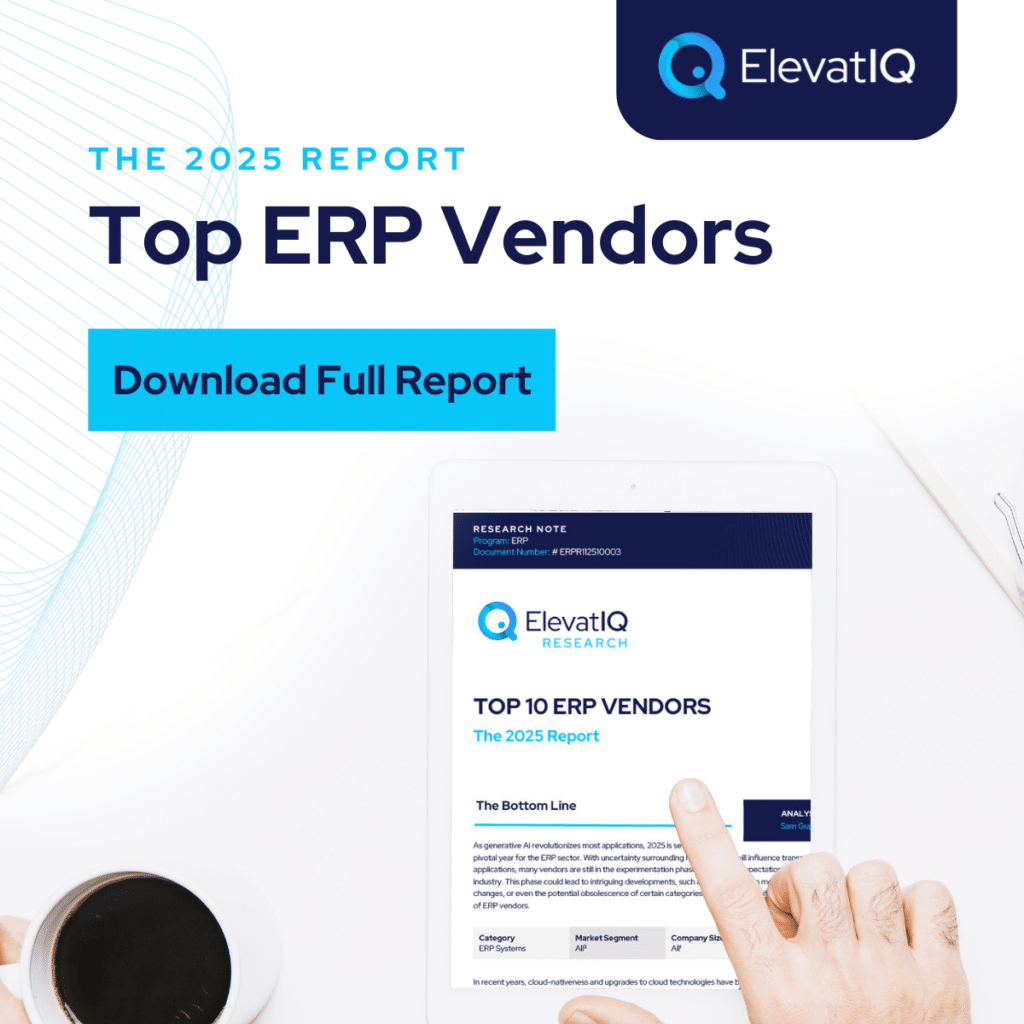
Conclusion
Crafting a robust ERP testing plan is a multifaceted process that demands meticulous planning, collaboration, and the adoption of best practices. By prioritizing the engagement of key stakeholders, defining testing parameters, and leveraging advanced testing methodologies, organizations can ensure a thorough and efficient evaluation of their ERP systems. Each best practice contributes to the overall success of the ERP testing plan.
Implementing these strategies not only minimizes risks and enhances system reliability but also positions organizations for a seamless and successful ERP system implementation. The careful consideration of these 20 key factors is paramount in achieving a well-rounded ERP testing strategy that meets the dynamic challenges of modern business environments. This list intends to provide you with insights for further discussion with your independent ERP consultants.


